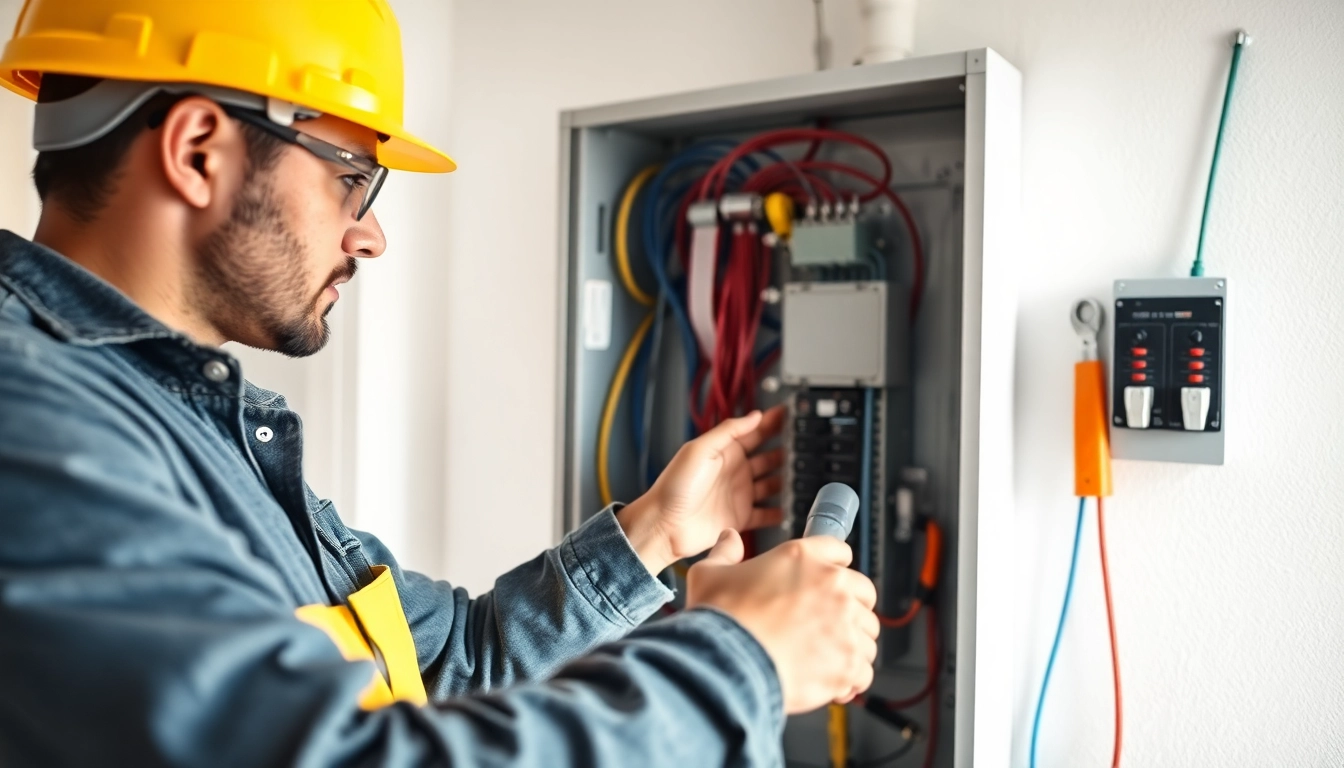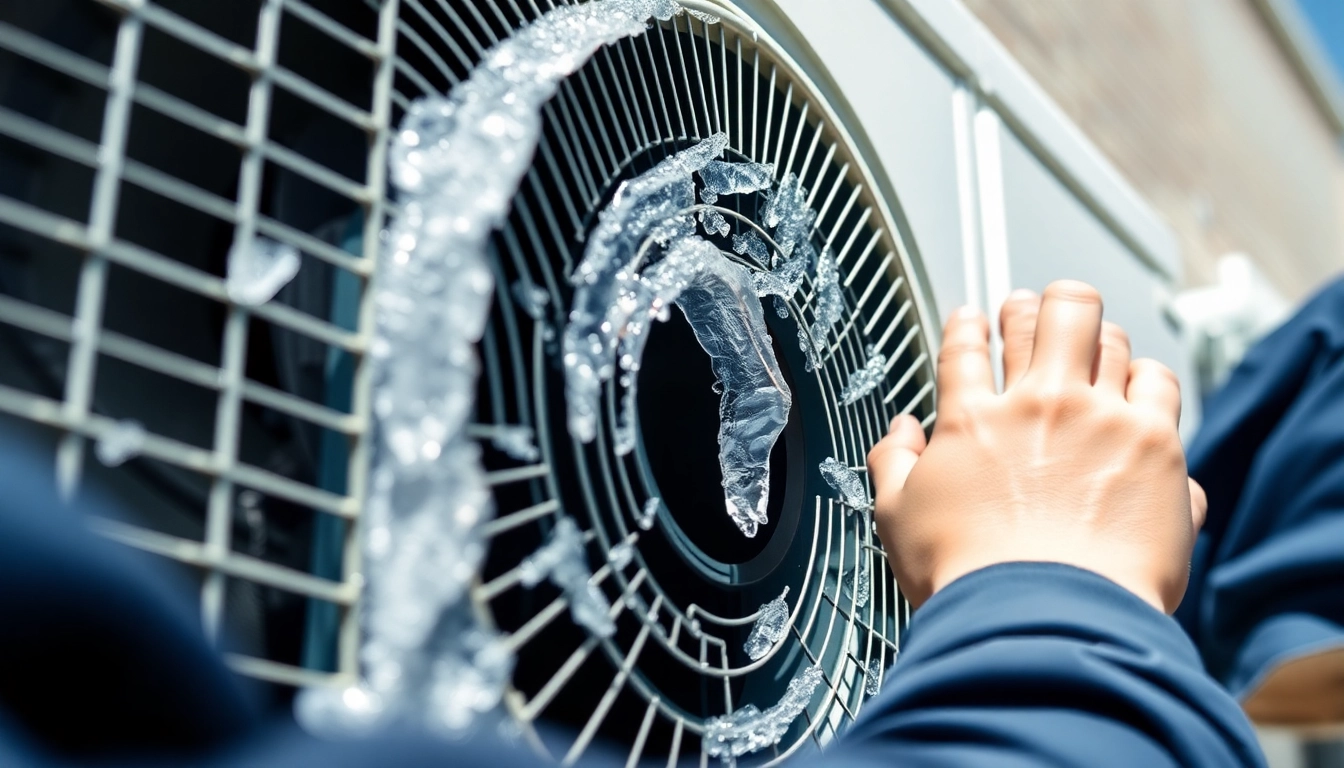Understanding the Basics of Electrical Panel Upgrade
What is an Electrical Panel?
An electrical panel, also known as a breaker box or service panel, is a crucial component of your home’s electrical system. It acts as the central hub where your home’s electrical supply is distributed to various circuits. Essentially, it serves as the interface between the power supply from your utility company and the electrical wiring within your home. The electrical panel houses circuit breakers or fuses that help protect your electrical system from overload by interrupting the circuit when too much current flows. Understanding what an electrical panel is and its fundamental role can help homeowners make informed decisions regarding maintenance and upgrades.
Importance of Upgrading Your Electrical Panel
As technology advances and the number of electrical devices in our homes increases, the need for a robust electrical system becomes ever more pressing. An outdated or insufficient electrical panel can lead to several issues, including frequent circuit overloads, flickering lights, and even fire hazards. Upgrading your electrical panel not only accommodates your current electrical load but also provides the flexibility necessary for future expansions—be it adding more appliances, upgrading to energy-efficient systems, or installing renewable energy sources like solar panels. Taking proactive steps to upgrade ensures long-term safety and reliability in your home’s electrical infrastructure.
Signs Indicating an Electrical Panel Upgrade is Necessary
Recognizing the signs that it’s time for an electrical panel upgrade is essential for maintaining safety and functionality within your home. Some key indicators include:
- Frequent tripping of circuit breakers or blown fuses.
- Burning smells or visible signs of rust or corrosion on the panel.
- Inability to power new appliances due to insufficient amperage.
- Presence of a fuse box rather than a circuit breaker panel, typically indicating older systems.
- Home renovations or significant increases in electrical usage, such as installing electric vehicle charging stations.
If you notice any of these signs, it’s crucial to evaluate your situation further and consider an Electrical Panel Upgrade.
Benefits of an Electrical Panel Upgrade
Increased Electrical Capacity and Safety
One of the most compelling reasons for upgrading your electrical panel is to ensure increased electrical capacity. Modern homes typically require a minimum service of 200 amps to handle today’s energy demands. Upgrading from an older 100 or 150 amp panel to a 200 amp panel can support multiple high-demand devices and appliances simultaneously without risking overheating or damage. Additionally, newer circuit breakers offer improved safety features, such as Ground Fault Circuit Interrupters (GFCIs) and Arc-Fault Circuit Interrupters (AFCIs), which significantly enhance protection against electrical shocks and fires.
Enhanced Energy Efficiency and Cost Savings
Upgrading your electrical panel can lead to increased energy efficiency, as newer systems are designed to minimize energy loss. With improved wiring connections and updated breakers that better regulate electrical flow, homeowners often see reductions in their electricity bills post-upgrade. Furthermore, fewer energy losses mean a reduced environmental footprint, making it a win-win for both your wallet and the planet.
Improve Home Value with Electrical Panel Upgrade
Investing in an electrical panel upgrade can substantially enhance your property’s market value. Prospective buyers prioritize homes with modern electrical systems that offer reliable, efficient service. When it comes time to sell, an upgraded electrical system not only signals safety and reliability but may also streamline the selling process, potentially allowing for a higher selling price.
Cost Factors of Electrical Panel Upgrade
Average Costs and Price Breakdowns
The cost of upgrading an electrical panel varies widely based on several factors, including the existing panel’s condition, the required amperage, and local labor rates. On average, homeowners can expect to pay between $800 and $4,000 for an upgrade. Smaller residential units with minimal changes may end up on the lower end, while larger homes with extensive modifications could face significantly higher expenses. Typical cost breakdowns include:
- Labor: $50 to $120 per hour.
- Panel cost: $100 to $500, depending on amperage and features.
- Permits and inspection fees: Varies by locality and requirements.
Being aware of these costs can help homeowners budget appropriately for their upgrade. It’s advisable to obtain multiple quotes from licensed electricians to ensure a fair price.
Finding Financial Assistance and Rebates
Homeowners may find financial relief through local, state, or federal programs designed to support energy efficiency improvements, including electrical panel upgrades. Rebates can often reduce the net cost substantially. Researching available programs in your area can provide significant financial benefits. It’s also worthwhile to consult with your utility provider, as many have incentive programs to encourage energy-efficient upgrades.
Investing in Quality: Comparing Materials and Labor
When planning an electrical panel upgrade, choosing high-quality materials and skilled labor is paramount. Investing in a reputable panel brand and opting for qualified electricians can ensure that the upgrade meets safety standards and operates efficiently. While it may be tempting to opt for cheaper materials or labor to cut costs, this could lead to significant expenses in the long run due to potential failures and safety hazards.
Choosing the Right Professional for Your Electrical Panel Upgrade
Qualifications and Credentials to Look For
Selecting the right electrician for your upgrade is crucial for ensuring that the work is completed safely and effectively. When evaluating potential contractors, consider the following qualifications:
- Licensing: Ensure that the electrician is licensed in your state or region, which demonstrates compliance with local regulations.
- Insurance: Verify that the contractor has liability insurance and workers’ compensation to protect you from potential liabilities.
- Experience: Look for electricians with substantial experience specifically in panel upgrades and related electrical work.
Cost vs. Quality: Selecting the Best Service
While it may be tempting to go with the lowest bid, the price of service should be weighed against the quality of materials and expertise. The saying “you get what you pay for” certainly applies in the electrical field, where cheaper options can lead to unsafe installations. Therefore, consider the reputation and reliability of your chosen electrician alongside their pricing when making your decision.
Reading Reviews and Getting Recommendations
Online reviews can be invaluable in assessing potential contractors. Look for reviews on platforms like Yelp, Google, or specialized contractor sites. Additionally, seeking recommendations from friends, family, or neighbors who have undergone similar upgrades can provide first-hand insights into potential hires. Personal referrals often lead to finding electricians who not only provide quality work but also exhibit professionalism and reliability.
Maintenance and Care Post Electrical Panel Upgrade
Routine Checks for Optimal Performance
Following an electrical panel upgrade, regular maintenance checks are essential to ensure optimal performance and prolonged durability. Homeowners should consider visual inspections every six months, ensuring that the panel appears clean and free from dust, corrosion, or damage. It’s also beneficial to have a qualified electrician assess the panel annually for any potential issues that could arise over time.
Signs That Additional Adjustments are Needed
Even after upgrading, homeowners should remain vigilant for any signs that indicate further adjustments may be required. These signs can include:
- Recurrent tripping of breakers.
- Issues with power quality such as flickering lights.
- Unusual sounds emanating from the panel.
Such issues should prompt immediate consultation with a licensed electrician to prevent risks and ensure safety.
Long-term Benefits of Regular Maintenance
Investing time and resources into regular maintenance of your electrical panel pays dividends in the long run. Keeping the panel in optimal condition helps prevent unexpected failures, prolongs its lifespan, and ensures safety. Furthermore, a well-maintained panel maximizes the efficiency of your home’s electrical system, ultimately contributing to lower energy costs and a safer living environment. Regular check-ups can also save homeowners from expensive emergency repairs, making consistent maintenance a wise investment.



